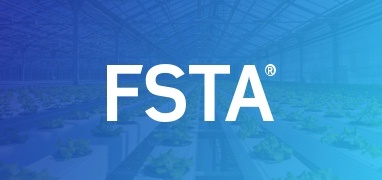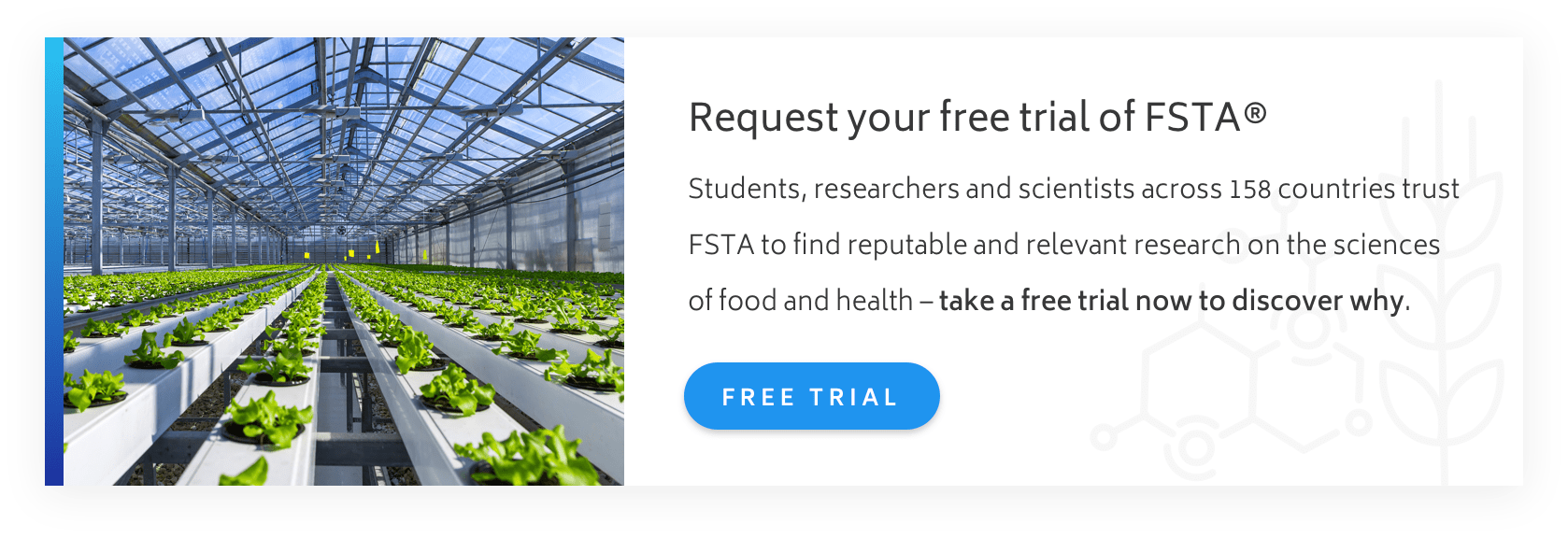At IFIS Publishing, we recently undertook an analysis of how global food security research has evolved over the past five years. Drawing on data from FSTA®, the Food Science & Technology Abstracts database, our study examined longitudinal trends in the subject terms attached to thousands of peer-reviewed papers published between 2021 and 2025.
Tracking those descriptors tells a story about how research attention has shifted. Over that period, the scientific conversation around food security has changed decisively. It’s no longer just about how much food can be produced. It’s about how safe, nutritious, and equitable that food is — and how the systems behind it hold up under stress.
Shifting Focus from Production to Nutrition and Equity
Within the corpus of food-security-related literature indexed in FSTA, descriptors linked to nutrition assistance (+85.7%), poverty (+84.6%), malnutrition (+76.9%), and diet quality (+66.7%) all rose sharply between 2021 and 2025. These are not marginal increases; they mark a clear broadening of the research lens from production and supply to the lived realities of diet, affordability, and health. In the space of half a decade, “nutrition” has evolved from a peripheral concern to one of the central coordinates of global food-security science.
Across the literature, this reorientation is clear. Researchers are looking beyond yield and supply toward diet quality, affordability, and vulnerability. Nutrition has become a signal of system health, intersecting with climate change, safety, economics, and social structures.
Understanding Nutrition Security Through Lived Experience
In Washington, DC, for instance, a community-based study on sugary-drink consumption revealed that taste was only part of the picture. Trust in tap water, shop opening hours, and product availability all shaped what people drank. In California, a study of the WIC programme showed that eligibility doesn’t guarantee nutritional benefit when barriers such as transport or store policy intervene.
Elsewhere, research with adults living with chronic kidney disease captured what “nutrition security” really means: being able to afford, prepare, and consume the right foods for one’s condition within the real limits of income, energy, and support.
Cultural and generational dimensions are also becoming clearer. In Saudi Arabia, younger consumers are more open to sustainable diets but most remain early in that transition, proof that awareness alone doesn’t change eating habits without cultural fit.
Resilience, Climate, and the Pathways to Better Nutrition
Sometimes, the route to better nutrition begins far from the table. In Kenyan pastoral communities, a programme designed to support livestock-feed supplies led to measurable improvements in women’s and children’s dietary diversity, especially when paired with simple nutrition counselling. A resilience intervention became a nutrition intervention by design rather than accident.
The climate signal is impossible to miss. Studies show that extreme temperatures reduce yields unevenly, with some adaptation measures — such as protected agriculture or insurance — working better for certain stresses than others. In areas affected by conflict, the continued functioning of local processing and distribution systems has proven critical to maintaining diet stability.
This post draws on the Nutrition and Wellness section of our new customer report, “Redesigning Resilience: What 5 Years of Food Security Research Reveals.” The full report explores four additional fronts — AI and Digital Systems, Safety and Risk, Climate and Environment, and Chemistry and Processing — showing how each contributes to a more adaptive, interconnected food system.
If you’re an IFIS customer, you can request the full report by emailing Angela Ball (or your usual IFIS contact). And if you’re not yet a customer but would like to understand how FSTA can support your research, we’d love to hear from you.
Collaboration and Interconnected Systems for Lasting Food Security
Together, these findings reinforce a simple truth: food security cannot be reduced to production metrics alone. It is a network of interdependencies where safety, sustainability, equity, and nutrition all matter, and where weakness in one area can cascade through the rest.
That’s why this year’s World Food Day theme, “Hand in Hand for Better Foods and a Better Future,” resonates so strongly. Collaboration isn’t an aspiration; it’s the mechanism by which resilience is built. Farmers, technologists, nutritionists, policymakers, and educators each hold a piece of the system — and progress depends on joining those pieces together.
Through FSTA, we see that interconnectedness plays out every day. The database makes the global research landscape more navigable, not just for scientists but for everyone working to turn evidence into action. By following how research topics rise and intertwine over time, we can see where science is converging and where the next questions are forming.
Because food security shouldn’t mean surviving on the bare minimum. It should mean building systems strong enough — and fair enough — to nourish people through uncertainty.
References
Al-Otaibi, H. H., Al-Hashim, S., & Alhajri, A. S. (2025). Generational perspectives on sustainable diets in Saudi Arabia: Implications for food security and behavioral change. Frontiers in Nutrition, 12, 1672606. https://doi.org/10.3389/fnut.2025.1672606
Anderson, C. E., & Whaley, S. E. (2025). Household WIC benefit redemption varies by participant and household characteristics in Southern California. Journal of the Academy of Nutrition and Dietetics, 125(10), 1468–1481.e20. https://doi.org/10.1016/j.jand.2025.01.014
Andrade, J. M., Mullis, K., & Lamino, P. (2025). Perceptions of food and nutrition security among adults with chronic kidney disease, nondialysis: A mixed-method study. Journal of Renal Nutrition, 35(5), 589–597. https://doi.org/10.1053/j.jrn.2025.05.003
Estrade, M., Mui, Y., Witting, L., Burgos-Gil, R., Calancie, L., Gittelsohn, J., & Colón-Ramos, U. (2025). Opportunities in programs and policies to address the underlying drivers of sugary drink and water consumption in the Washington, DC, metro area: A qualitative community-based system dynamics approach. Journal of the Academy of Nutrition and Dietetics, 125(10), 1458–1467.e1. https://doi.org/10.1016/j.jand.2025.01.001
Mutono, N., Muema, J., Bukania, Z., Kimani, I., Boyd, E., Mutua, I., Gacharamu, G., Wambua, F., Makori, A., Njuguna, J., Jost, C., Osman, A. M., Souza, D., Palmer, G. H., Yoder, J., & Thumbi, S. M. (2025). Effect of behavioral change communication and livestock feed intervention on dietary practices in a Kenyan pastoral community: A randomized controlled trial. Nutrients, 17(18), 2997. https://doi.org/10.3390/nu17182997
Wang, J., Ye, F., Hu, J., & Luo, J. (2025). Heterogeneous mitigation effects of adaptation initiatives on grain yield losses from extreme temperatures in China: Implications for grain resilience and food security. Frontiers in Sustainable Food Systems, 9, 1647826. https://doi.org/10.3389/fsufs.2025.1647826
Win, M. T. (2025). Resilience and adaptation in agriculture: Conflict, agricultural clusters, and labor dynamics (Doctoral dissertation, Michigan State University). ProQuest Dissertations & Theses Global. Publication No. 32169147. https://www.proquest.com/docview/3240255257


